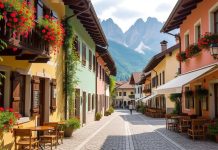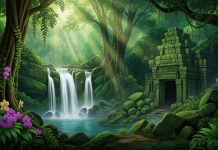Essential Tips for Visiting Grand Canyon National Park
Choose the Right Time to Visit
Understanding the Seasons
When planning a trip to the Grand Canyon, it’s crucial to consider the seasons. Each time of year offers a unique experience and different weather conditions. Spring (March to May) and fall (September to November) are generally considered the best times to visit, offering cooler temperatures and fewer crowds. Summer (June to August) can be crowded and hot, especially on the South Rim, with temperatures soaring over 100°F (38°C). Winter (December to February) presents a quieter experience; however, the North Rim often closes due to snow.
Special Events and Deals
Visiting during special events like the Grand Canyon Star Party in June can add another layer of enjoyment to your trip. Additionally, National Park Week in April offers free entrance on select days, which can both benefit your budget and provide a lively park atmosphere with special activities.
Exploring the Rims: South vs. North
South Rim Highlights
The South Rim is the most accessible part of the park and operates year-round. It's home to iconic viewpoints like Mather Point and the Historic Grand Canyon Village. Touring the South Rim often includes experiences like the Rim Trail, which offers numerous scenic overlooks for a leisurely walk or bike ride. Don’t miss desert views or a visit to the informative Grand Canyon Visitor Center.
North Rim's Secluded Charm
The North Rim, open from mid-May to mid-October, is less crowded, giving it a more serene and intimate feel compared to the South Rim. The views are equally stunning, with Point Imperial and Cape Royal offering spectacular panoramas. It’s perfect for those seeking solitude and less-traveled paths like the Ken Patrick Trail.
Getting Around the Park
Using the Shuttle Service
The National Park Service provides a free shuttle bus system on the South Rim, which is recommended to maximize both convenience and reducing environmental impact. The shuttle buses are wheelchair accessible and cover routes from the village to key trailheads and viewpoints.
Driving and Parking Tips
If you prefer driving, arrive early, especially in peak season, as parking fills up quickly. Designated parking lots near the Visitor Center and popular trailheads are good starting points. Be sure to check for any road closures, especially during winter.
Engaging Activities and Experiences
Hiking Adventures
Renowned Trails
The Bright Angel and Rim Trail offer experiences suitable for various skill levels. The Rim Trail caters well to casual walkers with mostly flat terrain and breathtaking scenery. In contrast, the Bright Angel Trail provides more of a challenge, descending into the canyon with switchbacks to Plateau Point, prompting visitors to gauge their return time carefully.
Backcountry Adventures
For the more adventurous, venturing into the backcountry can be rewarding. Secure requisite permits for overnight hikes, ensuring plenty of water, food, and preparation for unpredictable weather. Trails like the challenging North Kaibab Trail descend deep into the canyon toward the Colorado River.
River Rafting Expeditions
White-water rafting on the Colorado River offers an exhilarating way to witness the canyon’s grandeur from below. Trips can last from one day to several, with varying degrees of rapids to navigate. Booking in advance is essential, as tours fill up quickly.
Ranger-Led Programs
Engage in ranger-led programs to learn about the park's ecology, history, and geology. These range from walks to nighttime stargazing events and are suitable for all ages. Check the park’s schedule upon arrival to not miss out on these educational opportunities.
Staying Overnight: Accommodation Options
Inside Park Lodging
Staying within the park maximizes your time. The Grand Canyon Railway and the El Tovar Hotel bring historical charm and proximity to key sites. Reservations should be made well in advance, particularly for peak season.
Camping Options
For a more rustic experience, campgrounds like Mather on the South Rim and the NPS-affiliated North Rim Campground provide an immersive natural setting. Be aware of specific regulations regarding campfires, waste disposal, and food storage to protect wildlife and the environment.
Respecting Nature and Wildlife
Leave No Trace Principles
Embrace Leave No Trace ethics by packing out trash, respecting plant life, and refraining from feeding wildlife. Maintain the beauty of the park By preserving its ecosystem for future visitors.
Wildlife Safety Tips
The park is home to a variety of animals, including elk and rattlesnakes. Maintain a safe distance, especially from larger mammals, and be cautious of your surroundings. Never approach or feed any park wildlife.
Health and Safety Precautions
Preventing Heat Exhaustion
Hydrate frequently and take regular breaks during hikes. The risk of dehydration spikes in high temperatures, so monitor for symptoms like dizziness or nausea. Most importantly, listen to your body and take shade when needed.
Negotiating the Terrain
The canyon's rugged landscape requires careful footing. Wearing sturdy hiking boots with good tread reduces the risk of slips, while using trekking poles can provide additional stability on steep inclines.
Cultural and Historical Insights
Understanding the Human History
The Grand Canyon has deep-rooted connections to Native American history, with tribes like the Hopi, Navajo, and Havasupai inhabiting and influencing the area. Visiting museums such as the Tusayan Museum can enhance your understanding of the canyon's cultural tapestry.
Archaeological Wonders
Explore remnants of ancient dwelling sites and rock art scattered throughout the park. Guided tours can offer detailed narratives, helping you appreciate the significance of these historical sites.
Recommended Gear and Packing
Essential Items to Bring
Pack layers suitable for drastic temperature changes, a hat for sun protection, a reliable map or GPS, and a reusable water bottle. Cameras or binoculars are also beneficial for capturing the sprawling views and observing wildlife.
Technology and Connectivity
Cell reception is often limited, encouraging visitors to disconnect. It’s advisable to download necessary maps or guides before arrival. Some accommodations and visitor centers offer Wi-Fi if needed.
Dining and Culinary Options
Park Restaurants
Dining at establishments like the El Tovar Dining Room can provide both captivating canyon views and gourmet meals. For a more informal experience, the Bright Angel Lodge offers classic American cuisine.
Picnic amid Nature
If you prefer a more personal dining experience, pack a picnic to enjoy one of the park's many picnic areas. It combines dining with breathtaking scenery, enhancing the outdoor experience.
Photography Tips for Stunning Images
Best Times for Shooting
Plan shoots during golden hours—early in the morning or late afternoon—when lighting is softer and shadows create dramatic contrasts. Sunsets and sunrises, particularly from points like Hopi and Yavapai, offer stunning vistas.
Camera Settings for Success
Utilize a wide-angle lens to capture the vastness of the canyon. Experiment with aperture settings to play with depth of field, ensuring foreground elements enrich the composition against the canyon backdrop.
Visitor Etiquette and Behavior
Interaction with Others
Politely share popular viewpoints and trails with other explorers, ensuring everyone can enjoy the park's offerings. Adhere to posted signs and instructions for a harmonious visit.
Noise Control
The park's natural ambiance can be disrupted by loud noises, so keep conversations low in volume and respect the serenity of your surroundings.
Exploring the Grand Canyon National Park offers an unparalleled adventure of natural beauty, geological history, and ancient cultures. By respecting the park’s guidelines and embracing a respectful travel approach, your visit will not only be more enjoyable but will play a role in preserving this global treasure for future generations.































